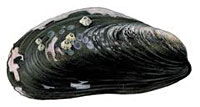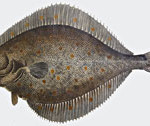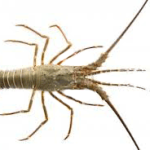
Pelecypoda
Mussels are marine molluscs of the class Pelecypoda, which means hatchet-foot. They are filter-feeding bivalves, having a shell consisting of two valves, or movable pieces, hinged by an elastic ligament. Within the shell there is a fleshy layer of tissue called the mantle with a cavity (the mantle cavity) between the mantle and the body wall proper. The mantle secretes the layers of the shell, including the inner nacreous, or pearly, layer. Nacreous layers can also be formed around a foreign body in reaction to irritation. A muscular hatchet-shaped foot projects from the front end of the mollusc, between the valves. This foot is used for burrowing, and, in some bivalves (e.g., razor clams), to swim.
Bivalves differ in their habits: some, such as the oysters and marine mussels, have a reduced foot and are permanently attached to a substratum. Most of the body consists of the reproductive organ – orange in females and white in males. During reproduction they shed enormous numbers of eggs and sperm into the water.
One of the rarer species that you may encounter is the Fan mussel (Atrina fragilis). This is one of the largest of the European bivalve molluscs, growing to 30-48 cm long. The shell colour graduates from a slight yellowbrown to darker brown or even chestnut. Fan mussels are, as their name suggests, triangular, thin and taper to a point, with the posterior (broad) end protruding from the surface whilst the anterior (pointed) end is embedded in sediment, fixed by fine byssal strands. These are a strong threadlike fibres produced by the mussel to attach itself to a solid surface or substrate. A series of fine, raised concentric lines run across the shell while 8 – 12 low, smooth, wavy ridges radiate from the beak or umbone. The interior of the shell is glossy with a smooth margin, although this is often fragmented at the posterior end. Fan mussels have also earned the alternative name of ‘razorfish’ due to their ability to cut the feet of unlucky bathers. The fan mussel is widespread, ranging from Northern Scotland to the Iberian Peninsula, but is scarce and is rarely encountered. It is often solitary but populations occur as small groups or patches of individuals form in small beds, at depths ranging from sub-tidal to as much as 400 m. Numbers may have declined as a result of demersal fishing activities and, in some areas, sand and gravel extraction. Whilst surveying, please remember that this species is somewhat rare, so don’t necessarily expect to see them, or indeed confuse them with another species of mussel. Above all, if you are fortunate enough to spot one or more, do not remove them from their habitat!
The horse mussel (Modiolus modiolus) is another filter-feeding edible marine mollusc. Horse mussels can be found from the Arctic Ocean to Florida and California as well as in Europe. They form dense beds in moderately shallow water at depths of 5 -70 m in fully saline, often moderately tide – swept areas.
Adults are usually up to 15cm in length, with some individuals as large as 22cm. Horse mussels live in moderately shallow water, partially buried in soft sediments or attached to hard substrata. They occur in clumps or extensive beds or reefs of many individuals. Although the species is widespread and common, true beds forming a distinctive ‘biotope’ – a well-defined geographical area, characterised by specific ecological conditions, which physically supports the organisms that live there – are relatively uncommon.
Modiolus modiolus can occur as relatively small, dense beds carpeting steep rocky surfaces, as in some Scottish sea lochs, but is more frequently recessed at least partly into mixed or muddy sediments in a variety of tidal regimes. The species is long-lived, with some individual animals within beds frequently 25 years old or more. The byssal threads secreted by the horse mussel have an important stabilising effect on the seabed, binding together living horse mussels, dead shells, and sediment. As Modiolus modiolus is a filter feeder, the accumulation of faeces and pseudofaeces (food particles embedded in mucus that are expelled by the mussels) provides a rich food source, which, together with the varied habitat, means that extremely rich and diverse associated faunas may occur on dense beds.
The horse mussel shell is solid, swollen, approximately oblong or irregularly triangular in shape. The colour is glossy yellow to dark brown in adults; in young animals the shell appears bluish. These should not be confused with the common mussel (Mytilus edulis), which is smaller, with a pointed base and is bluish black in colour. The common mussel is indeed common; particularly around the coast of the British Isles There are large commercial beds to be found in the Wash, Morecambe Bay, Conway Bay and the estuaries of southwest England, north Wales, and west Scotland.
Mytilus edulis occurs from the high intertidal to the shallow subtidal areas, attaching their byssal threads suitable substrata such as rocks and crevices, as well as in sheltered harbours and estuaries, often occurring as dense masses. The shell is smooth with a sculpting of concentric lines and is roughly triangular, although the shape can vary as a result of the prevailing conditions. Individual specimens usually range in size from 5 -10 cm although some populations never attain more than 2-3 cm, whilst the largest specimens may reach 15-20 cm.








Social Profiles